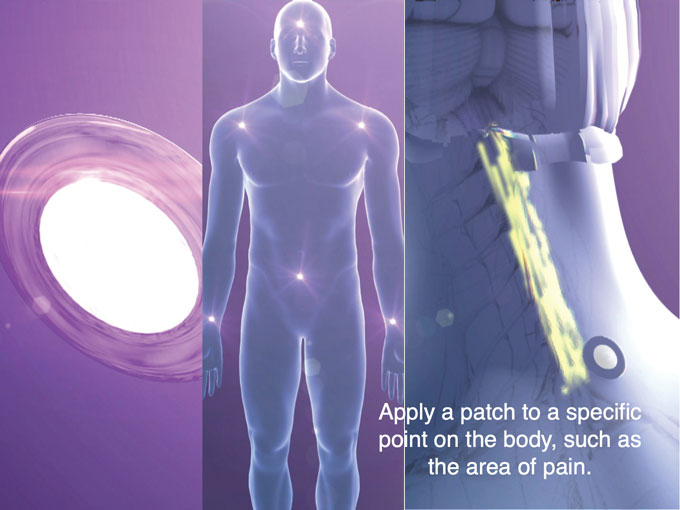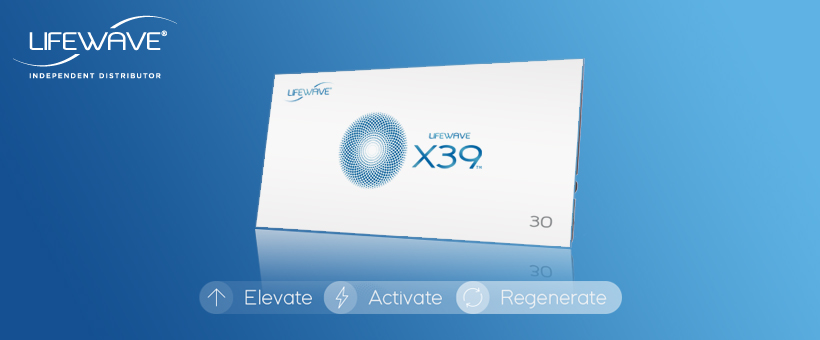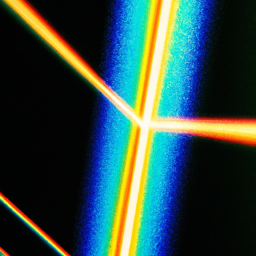In this article, you will discover the fascinating world of infrared light therapy and all its incredible benefits. From relieving pain and reducing inflammation to improving skin conditions and promoting relaxation, infrared light therapy has become increasingly popular in the field of alternative medicine. Join us as we explore the uses of infrared light therapy and uncover the science behind its effectiveness. Get ready to uncover the power of this innovative therapy and discover how it can improve your health and well-being.
What is Infrared Light Therapy?
Definition of Infrared Light Therapy
Infrared light therapy, also known as low-level light therapy or photobiomodulation, is a non-invasive treatment that uses specific wavelengths of light to stimulate cellular function within the body. Unlike other forms of light, infrared light is not visible to the human eye but can be felt as heat. This therapy has gained popularity in recent years due to its potential health benefits and wide range of applications.
History of Infrared Light Therapy
The use of infrared light for therapeutic purposes can be traced back to ancient civilizations such as the Egyptians and Greeks. They believed in the healing power of sunlight and used the sun’s rays to treat various ailments. However, it was not until the 1960s that scientific research began to uncover the mechanisms behind infrared light therapy and its potential benefits. Since then, advancements in technology have allowed for the development of various infrared light therapy devices, making it more accessible to the general public.
How Does Infrared Light Therapy Work?
Mechanism of Infrared Light Therapy
Infrared light therapy works by delivering specific wavelengths of light to the body’s tissues and cells. When these wavelengths penetrate the skin, they are absorbed by the mitochondria in the cells. The mitochondria are responsible for producing energy in the form of adenosine triphosphate (ATP). The absorbed light then triggers a series of biochemical reactions within the mitochondria, leading to increased cellular energy production and enhanced cellular function.
Effects of Infrared Light on the Body
The effects of infrared light therapy on the body are wide-ranging and can vary depending on the specific wavelengths used and the targeted area of treatment. Some of the key effects include:
-
Pain Relief and Rehabilitation: Infrared light therapy has been shown to have analgesic properties, helping to reduce pain and inflammation in various conditions such as arthritis, muscle strains, and joint injuries. It can also aid in the healing and recovery process by promoting tissue repair and reducing muscle fatigue.
-
Improved Circulation and Wound Healing: Infrared light therapy has the ability to stimulate the production of nitric oxide, which helps to dilate blood vessels and improve blood flow. This increased circulation can facilitate wound healing by delivering essential nutrients and oxygen to the injured area.
-
Skin Rejuvenation and Anti-Aging: Infrared light therapy has gained popularity in the field of skincare due to its ability to stimulate the production of collagen and elastin, two proteins that are essential for maintaining skin elasticity and firmness. This can help reduce the appearance of wrinkles, fine lines, and scars, resulting in a more youthful and rejuvenated complexion.
-
Stress Reduction and Relaxation: The warmth generated by infrared light therapy can have a calming effect on the body, helping to reduce stress and induce relaxation. This can be particularly beneficial for individuals with anxiety, insomnia, or other stress-related conditions.

Benefits of Infrared Light Therapy
Pain Relief and Rehabilitation
One of the primary benefits of infrared light therapy is its ability to alleviate pain and aid in the rehabilitation process. Studies have shown that infrared light can help reduce inflammation, relieve muscle soreness, and accelerate the healing of soft tissue injuries. It is commonly used in sports medicine and physical therapy settings to promote faster recovery and enhance athletic performance.
Improved Circulation and Wound Healing
Infrared light therapy has been found to enhance blood flow and circulation, which is crucial for wound healing. By increasing the production of nitric oxide, infrared light therapy can dilate blood vessels and improve the oxygenation and nutrient delivery to injured tissues. This promotes the formation of new blood vessels and accelerates the healing process of both acute and chronic wounds.
Skin Rejuvenation and Anti-Aging
In the field of aesthetics, infrared light therapy has gained recognition for its ability to rejuvenate the skin and combat signs of aging. The stimulation of collagen and elastin synthesis helps to improve skin texture, reduce the appearance of wrinkles and fine lines, and even out skin tone. Additionally, infrared light therapy can aid in the repair of damaged skin cells, resulting in a more youthful and radiant complexion.
Stress Reduction and Relaxation
Another notable benefit of infrared light therapy is its ability to promote relaxation and reduce stress. The warmth generated by the therapy can help soothe tense muscles, ease anxiety, and improve overall well-being. Many people find infrared light therapy sessions to be a calming and rejuvenating experience, making it a popular choice for relaxation and stress management.
Applications of Infrared Light Therapy
Treatment of Musculoskeletal Conditions
Infrared light therapy is widely used in the treatment of various musculoskeletal conditions, including arthritis, muscle strains, sprains, and joint injuries. The therapy can help reduce pain, inflammation, and swelling in affected areas, allowing for improved mobility and faster recovery. Additionally, infrared light therapy can be beneficial for individuals with chronic conditions such as fibromyalgia or back pain, providing long-lasting pain relief and improved quality of life.
Management of Chronic Pain
Chronic pain conditions such as neuropathy, migraines, and fibromyalgia can significantly impact an individual’s daily life. Infrared light therapy has shown promising results in managing chronic pain by reducing inflammation, increasing blood flow, and promoting tissue repair. Regular sessions of infrared light therapy can provide long-lasting pain relief without the need for medication or invasive procedures.
Sports Performance and Recovery
Athletes and individuals engaging in high-intensity physical activities can benefit from infrared light therapy for improved sports performance and faster recovery. The therapy helps to reduce muscle fatigue, enhance muscle tissue repair, and minimize the risk of injuries. By increasing blood flow and oxygenation, infrared light therapy can also aid in the removal of metabolic waste products and toxins, allowing for faster recovery and improved athletic performance.
Cosmetic and Dermatological Treatments
Infrared light therapy has gained popularity in the field of aesthetics and dermatology for its various skin benefits. It is commonly used in the treatment of acne, rosacea, and other inflammatory skin conditions. The therapy’s ability to stimulate collagen synthesis and promote cellular regeneration makes it an effective tool for improving skin texture, reducing scars, and minimizing the appearance of fine lines and wrinkles. Infrared light therapy can be applied to the face or specific areas of the body, providing targeted and non-invasive treatments for a wide range of skin concerns.

Types of Infrared Light Therapy Devices
Infrared Saunas
Infrared saunas are enclosed spaces or chambers equipped with infrared lamps that emit infrared light. These saunas provide a relaxing and therapeutic environment for individuals to experience the benefits of infrared light therapy. The heat generated by the infrared lamps penetrates the body, promoting sweating and detoxification. Infrared saunas are available in various sizes and designs, including portable options for home use.
Infrared LED Therapy Devices
Infrared LED therapy devices are compact devices that utilize light-emitting diodes (LEDs) to deliver infrared light to specific areas of the body. These devices are often used for targeted treatments and can be handheld or mounted on adjustable stands for convenience. Infrared LED therapy devices are commonly used in the field of aesthetics and skincare, allowing for precise and controlled application of the therapy.
Whole Body Infrared Therapy
Whole body infrared therapy involves the use of specialized beds or mats that emit infrared light throughout the entire body. These devices are designed to provide a comprehensive and relaxing therapy session. Whole body infrared therapy is often used in wellness centers, spas, and clinics, offering individuals a full-body experience of the therapy’s benefits.
Scientific Evidence and Research on Infrared Light Therapy
Studies on Pain Relief and Rehabilitation
Numerous scientific studies have investigated the efficacy of infrared light therapy in pain relief and rehabilitation. Research has shown positive results in reducing pain intensity, improving joint mobility, and accelerating the recovery process in various musculoskeletal conditions. Additionally, infrared light therapy has been found to be a safe and well-tolerated treatment option with minimal side effects.
Research on Wound Healing
Studies focusing on wound healing have also demonstrated the benefits of infrared light therapy. The therapy has been shown to promote faster healing of both acute and chronic wounds, including diabetic ulcers and pressure sores. Infrared light therapy aids in the regeneration of damaged tissue, enhances collagen synthesis, and improves overall wound healing outcomes.
Effects of Infrared Light on Skin Health
Numerous studies have explored the effects of infrared light therapy on skin health and aging. Research has shown that infrared light can stimulate the production of collagen and elastin, two proteins that play a vital role in maintaining skin structure and elasticity. This stimulation results in improved skin texture, reduced wrinkles, and enhanced overall skin appearance. Infrared light therapy has also been found to have anti-inflammatory effects, which can be beneficial for individuals with inflammatory skin conditions such as acne or rosacea.
Mechanisms Underlying the Benefits of Infrared Light Therapy
The exact mechanisms by which infrared light therapy exerts its therapeutic effects are not fully understood. However, current research suggests that the therapy’s benefits are mediated through various cellular and molecular mechanisms. These mechanisms include the activation of mitochondria, increased ATP production, modulation of oxidative stress, and the release of growth factors. These processes ultimately lead to enhanced cellular function, tissue repair, and improved overall health and well-being.

Safety and Precautions in Infrared Light Therapy
Potential Side Effects
In general, infrared light therapy is considered safe and well-tolerated. However, like any form of therapy, there may be potential side effects, although they are rare. Some individuals may experience mild temporary redness, warmth, or skin irritation in the treated areas. These side effects usually resolve on their own and pose no long-term risks.
Contraindications and Precautions
While infrared light therapy is generally safe for most individuals, there are some contraindications and precautions to consider. It is not recommended for individuals with certain conditions, such as active cancer, hyperthyroidism, or light-sensitive skin disorders. Pregnant women and individuals with implanted medical devices should also consult with their healthcare provider before undergoing infrared light therapy. It is important to follow safety guidelines and consult with a healthcare professional to determine the appropriateness of infrared light therapy for individual circumstances.
Choosing an Infrared Light Therapy Device
Considerations for Home Use
When selecting an infrared light therapy device for home use, there are several factors to consider. These include the device’s power output, wavelength range, and treatment area coverage. It is important to choose a device that provides the appropriate power and wavelength for the desired therapeutic effects. Additionally, consider the size and portability of the device, as well as any additional features or accessories that may be beneficial.
Professional Treatment Options
For individuals seeking professional infrared light therapy treatments, it is important to research reputable providers and ensure that they use high-quality devices. Professional treatment options may include sessions in infrared saunas, targeted treatments with infrared LED therapy devices, or whole body infrared therapy sessions. Consulting with a healthcare professional or aesthetician can help determine the most suitable treatment options for specific needs and goals.
Tips for Using Infrared Light Therapy
Duration and Frequency of Sessions
The duration and frequency of infrared light therapy sessions can vary depending on the specific condition being treated and the device being used. It is important to follow the manufacturer’s instructions or the guidance of a healthcare professional. In general, sessions typically range from a few minutes to 30 minutes, with multiple sessions per week for optimal results. It is best to start with shorter sessions and gradually increase duration and frequency as tolerated.
Proper Distance and Positioning
Proper distance and positioning of the infrared light therapy device is crucial for effective and safe treatment. Follow the instructions provided with the device to ensure the appropriate distance from the treatment area. Maintaining the recommended distance helps to ensure that the optimal amount of light is delivered to the targeted tissues. Positioning the device perpendicular to the skin surface and keeping it steady throughout the session will help ensure an even distribution of the therapy.
Skin Care before and after Therapy
To maximize the benefits of infrared light therapy and minimize the risk of potential side effects, proper skin care before and after therapy is essential. Ensure that the skin is clean and free from any lotions, oils, or cosmetics before the therapy session. After the session, gently cleanse the skin and apply a moisturizer to keep the skin hydrated and nourished. Sunscreen is also recommended, as infrared light therapy can increase the skin’s sensitivity to UV radiation.
Conclusion
Infrared light therapy is a non-invasive and potentially beneficial treatment that has gained popularity for its wide range of applications. From pain relief and rehabilitation to skin rejuvenation and stress reduction, infrared light therapy offers numerous potential health benefits. With advancements in technology, various infrared light therapy devices are available for both home use and professional treatments. However, it is essential to consider safety precautions, follow recommended guidelines, and consult with a healthcare professional to ensure the appropriateness and effectiveness of infrared light therapy for individual needs. Whether used for pain management, skincare, or sports performance enhancement, infrared light therapy provides a gentle and versatile approach to overall well-being.





